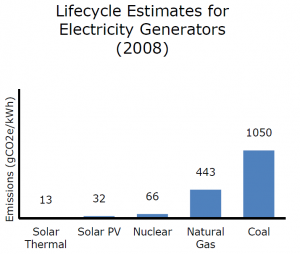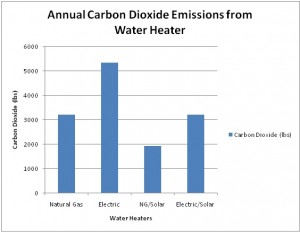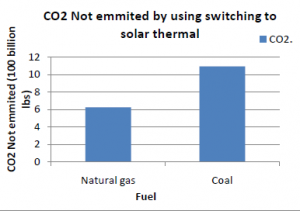As shown by the IPCC, the global climate is changing. Temperature is rising as a result of a rise in carbon dioxide emissions. Therefore finding ways to reduce humanity’s carbon footprint in any area is important. As discussed in other sections, solar thermal technology can be a very useful tool when applied to buildings. In particular solar thermal water heating and solar thermal space heating can make a significant impact on shrinking the carbon footprint. By using solar thermal energy for heating rather than fossil fuel or fossil fuel dependent electricity for heating, carbon dioxide emissions are reduced. As these following figures show the implementation of solar thermal technology to water and space heating can help reduce carbon dioxide helping with the global problem of global climate change.
 The above figure illustrates the low CO2-equivalent emissions generated over the lifecycle of a solar thermal collector, even compared to photovoltaic and nuclear energy technologies.
The above figure illustrates the low CO2-equivalent emissions generated over the lifecycle of a solar thermal collector, even compared to photovoltaic and nuclear energy technologies.
As shown by the above figure, the implementation of solar thermal technology for a typical home saves a significant portion of carbon emissions. The more reliant a home can be on a solar thermal system the less carbon dioxide is produced for hot water purposes.
On a larger scale in the United States solar technology looks even more favorable for solar thermal technology. As you can see when used for solar water and space heating, solar thermal technology has significant carbon savings.
Authored By: Chris Castello
Figure 1: Sam Brinton
Figure 2: Chris Castello
Figure 3: Sean Murphy
Edited by: Sam Brinton

